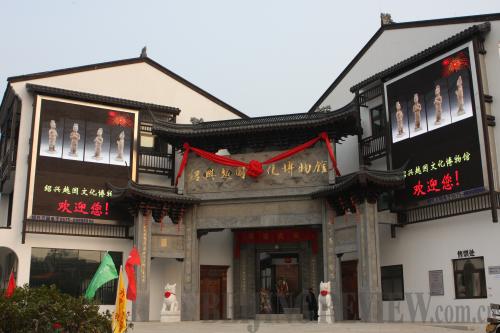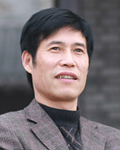|
 |
|
TREASURE HOUSE: The Shaoxing Yue Culture Museum reflects local building style (COURTESY OF SUN HAIFANG) |
Near a tranquil river and a stone bridge, an ancient Chinese structure stands against the clear blue sky in Shaoxing, a city in east China's Zhejiang Province whose history dates back 7,000 years. It is the famous private Shaoxing Yue Culture Museum.
 |
|
Sun Haifang, owner of the Shaoxing Yue Culture Museum |
"A person's life is limited, and cultural relics' life can be infinite. Through cultural relics, people can mentally travel to the world in ancient times and absorb nourishment from ancestors' wisdom," said Sun Haifang, owner of the museum, explaining why he decided to open a private museum.
Establishing a museum with typical items of the Yue culture in Shaoxing enabled every visitor to appreciate the infinite charm of this ancient civilization, said Sun.
Sun, a successful entrepreneur and famous collector, owns a collection of about 6,000 Yue cultural relics, several of which are unique.
Sun's passion for collecting Yue cultural relics started in the early 1980s. At that time, with the urbanization of Shaoxing, a large number of cultural relics of the ancient Yue State were unearthed. Antiquaries nationwide gathered in Shaoxing to buy and resell those treasures.
This touched Sun, who was born and grew up in Shaoxing. He decided to collect them, protect them and keep them in their birthplace—Shaoxing.
Shaoxing was the cradle of the Yue culture, which dates back to the Spring and Autumn Period (770-476B.C.). As early as 490 B.C., Goujian, King of the Yue State, built Shaoxing into the capital. Since then, 2,500 years have passed. Shaoxing has kept developing on the basis of the ancient city, and the impact of the prosperous Yue culture has reverberated through the whole of Chinese history.
"This is amazing. It's why I am highly interested in Yue cultural relics. As descendants of the ancient Yue State, it is our obligation to protect the valuable heritage of our ancestors and carry forward the ancient civilization," said Sun.
Later, he quit his job as a civil servant in the municipal government and established a company to take care of the collection. Now he has become a nationally famous collector of Yue cultural relics. As his collection increased, in 2002 Sun was struck by the idea: Why not establish a Yue culture museum?
"Shaoxing has long been renowned as the 'museum without walls.' But the cultural relics that truly reflect the city's history and culture are quite few, far from enough to give people a good knowledge of Shaoxing and the ancient Yue State," said Sun.
With this idea in mind, after some effort Sun obtained the approval of the Zhejiang Culture Relics Bureau to establish the museum.
In 2006, Sun invested 160 million yuan ($25 million) to establish the Shaoxing Yue Culture Museum, the biggest investment in a private museum in China at that time.
"A city without museums is like a person without a soul, and private museums are an important supplement to government-funded museums," he said.
Since the museum opened on October 23, 2007, it has attracted tourists and collectors from around the world to see its collections.
Rare treasures in the museum create an atmosphere of ancient serenity and elegance for visitors to indulge in.
"The exhibition items raise people's interest, awareness and ability in art appreciation, while helping greater numbers of visitors to have a better knowledge of Shaoxing," said Sun.
The museum's items are divided into four series: Yue-yao celadon, bronze mirrors, ancient weapons and other treasures. Many items are unique and are regarded as national treasures. These treasures have attracted a large number of collectors, especially people interested in Yue-yao celadon, bronze mirrors and ancient weapons to the museum. Here, they study these cultural relics and exchange with each other about their knowledge of the Yue civilization and specific items.
Of all the items in Sun's collection of Yue-yao celadon, the famous ancient Chinese porcelain, is the best in the whole country. He has collected representative Yue-yao celadon works from the Western Zhou Dynasty (1046-771 B.C.) to the Southern Song Dynasty (1127-1279).
| 